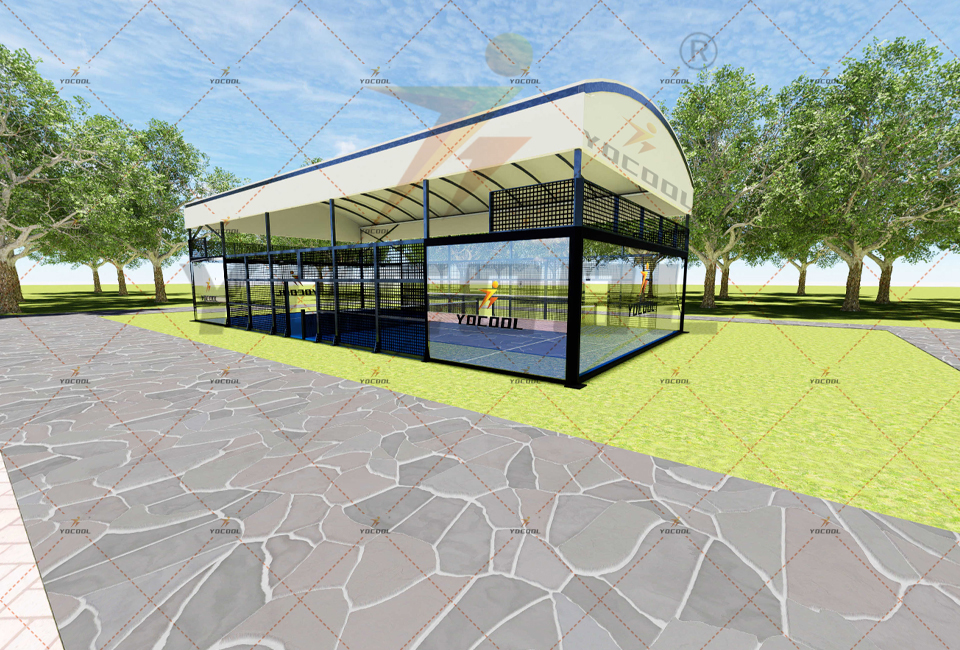

Understanding the Cost to Build a Padel Court
Padel, a racket sport that combines elements of tennis and squash, has seen a dramatic rise in popularity over the past few years. As more enthusiasts flock to the game, the demand for padel courts is surging worldwide. Building a padel court can be a lucrative investment, whether for personal use, a sports club, or a community facility. However, one of the primary considerations for prospective investors is the cost involved in constructing these courts. In this article, we will break down the various components affecting the cost to build a padel court and provide an overview of what to expect.
1. Court Dimensions and Specifications
A standard padel court measures 20 meters long and 10 meters wide, enclosed by walls that are typically made of glass and metal mesh. The foundation must be stable and carefully constructed, as the quality of the surface directly impacts gameplay. The cost of constructing the court varies depending on the dimensions and materials chosen. The two primary types of surfaces are artificial grass and concrete; the former usually comes with a higher initial investment due to installation complexity and maintenance requirements.
2. Site Preparation
Before construction begins, proper site preparation is crucial. This involves clearing the area, leveling the ground, and ensuring that proper drainage is in place to avoid water accumulation. Depending on the chosen location, site preparation can add significantly to the overall budget. It is essential to factor in costs for excavation, grading, and any additional landscaping that may be needed.
Materials account for a substantial portion of the overall cost of building a padel court. For example, high-quality glass panels for the walls can be expensive, and the choice of flooring can also influence costs. Generally, artificial grass surfaces cost between $10 to $25 per square meter, while concrete surfaces may be less expensive but can be less favorable for playing conditions.
Additional materials include lighting for night play, nets, and surrounding fencing, all of which contribute to the overall expenditure. Lighting systems, in particular, are essential for enhancing the playing experience during evening matches and can vary widely in cost depending on the technology used.

4. Labor Costs
Labor costs can vary based on the region and the complexity of the project. Hiring skilled workers, such as contractors who specialize in sports facilities, can elevate expenses but may ensure higher quality construction. Depending on the region, labor costs can represent 20-40% of the total budget. It is advisable to obtain quotes from multiple contractors to gauge the competition fairly.
5. Permits and Legal Fees
Before breaking ground on your project, ensure that you obtain the necessary permissions and permits. Depending on local regulations, these permits may require additional fees and could necessitate an architectural review. Addressing legal requirements can also be time-consuming, so budget accordingly to avoid unexpected delays.
6. Maintenance and Upkeep
Initial costs are not the only financial commitment when building a padel court. Future maintenance must be considered as well. Regular upkeep includes cleaning the playing surface, ensuring that glass walls remain intact, and maintaining lighting fixtures. Budgeting for ongoing expenses can help ensure the longevity of the court and provide a high-quality playing experience for users.
Conclusion
Building a padel court can be a fantastic investment for both personal enjoyment and community engagement. However, the overall cost can vary significantly based on various factors including site preparation, materials, labor, and ongoing maintenance. As a rough estimate, individuals looking to build a standard padel court should expect to invest anywhere from $30,000 to $70,000 or more, depending on the choices made throughout the process.
Ultimately, potential investors should conduct thorough research and possibly consult with professionals in the field to better understand the financial landscape and ensure that their padel court project is both successful and sustainable. With proper planning and budgeting, you can bring the excitement of padel to your community while enjoying all the social and health benefits the sport has to offer.
Premium Paddle Tennis Rackets for Every Court & Player
Premium Padel Courts: Expert Design & Installation Services
Premium Padel Courts: Panoramic Designs & Custom Builds
Premium Padel Court | Custom Designs & Quality Installation
Paddle Tennis Rackets: Unleash Power & Precision on Court
Best Paddle Tennis Rackets: Power, Control & Comfort